Archive for May, 2012
3 Arrested for Fraud and Damaging a Roof
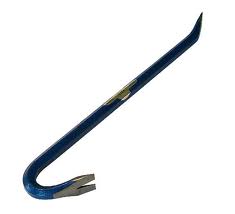
Lumberton New Jersey Police arrested 2 men and a teenager Thursday after a tip from a roofing contractor. The contractor was suspicious when he drove past the victim’s house and saw the 3 suspects working on the roof he had fixed last year.
The 3 suspects were taken into custody shortly after causing $3,000 worth of damage to a disabled veteran’s roof. Paul Frank, Larry Mitchell and an unidentified teenager were charged with burglary, theft by deception, criminal mischief and conspiracy, performing electrical work without a business permit and failure to register as contractors.
The suspects allegedly went to the victim’s home and told him his roof was leaking, since he is disabled and in a wheelchair he was unable to verify the damage and he gave the men $5,500 to make the roof repairs.
Malicious Swindlers
As if taking the man’s money wasn’t enough, the suspects tore two large holes in the victim’s roof with a crow bar exposing the attic. They forced open 2 electrical boxes and disconnected the wires. They also allegedly sprayed a black substance on the shingles, molding and gutters.
The two men were taken to Burlington County Jail and the teenager was taken to Burlington County Juvenile Detention Center. Mitchell was released on $20,000 bail and Frank’s bail was raised to $50,000 due to previous crimes he was charged with.
Lumberton officials are helping the victim to find legitimate contractors to fix the damage caused by the 3 suspects.
Viking Stadium Roof Design Up In The Air
 The Minnesota Vikings have been planning their new stadium for quite some time. After much debate over the design of the building, engineers cannot agree on the style of the new roof.
The Minnesota Vikings have been planning their new stadium for quite some time. After much debate over the design of the building, engineers cannot agree on the style of the new roof.
Retractable Roof
30 seasons in an aging building has Viking fans excited about the plans for a new stadium. However, the roof of the new Vikings stadium is undecided as design team members argue over whether or not the stadium should have a retractable roof. While some are pushing for the high tech roof design, others insist that the retractable feature is not necessary and will only drive up the price to build the new stadium.
Owner Zygi Wilf has been on board with the idea of a retractable roof since day one, but budget concerns have recently brought up the reality of the design. Early estimates reveal an additional $25 million or more for a retractable roof, money that some insist could be better spent elsewhere in the stadium. Wilf says, “it’s a competitive landscape to attract our fans to the facility, and we’re going to want to make it something special. To the extent that (a retractable roof) can get there, we’re going to try to do it.”
Stadium Roof Collapse due to Faulty Design
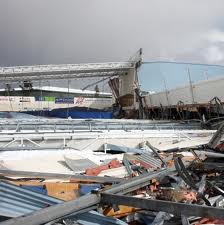
The $10 million roof at Southland Stadium in Invarcargill New Zealand, buckled in 2010 due to heavy snow, construction defects and design problems. Approximately 30 people were inside the stadium when it collapsed, fortunately no one was hurt.
Nearly 18 months after the collapse, the conclusions were released in a detailed report by consultants at the Department of Building and Housing. The investigation was performed by Hyland Fatigue and Earthquake Engineering using site examination, laboratory testing and 3-D computer analysis.
Defective Design
The report also stated that sagging was noticed when the new roof was first being built and the subsequent roof repair work was inadequate. It also states “defects in the construction of the steel tube truss roof, particularly those portions that involved welding on site, appear to have significantly reduced the ability of the roof to sustain the intended design loads and the snow load experienced at the time of the collapse.”
Insurers for the Southland Indoor Leisure Centre Charitable Trust are suing Invercargill City Council and the consulting engineer for $27 million. The disagreements are over the substandard building design and construction.
The Building and Construction Minister Maurice Williamson said “These are serious issues that have been properly investigated.” The report was sent to the police and Department of Labor and the Institution of Professional Engineers New Zealand (IPENZ).
Two More Unusual Roof Falls This Week

With OSHA’s (Occupational Safety and Health Administration) nationwide campaign to eliminate injuries and deaths due to falls from roofs,ladders and scaffolds; two roofers who weren’t using safety harnesses are lucky to be alive this week.
25 year old Chris Quinlan was electrocuted and kicked off a roof in Rochester Hills Michigan.
Quinlan was kneeling down using a nail gun to replace shingles during a roof repair when his nail gun kicked back and made contact with power lines. As 220 volts were shooting through his body, he was unable to move and get away from the wires; a coworker saw the accident and tried to kick Quinlan free.
Co-Worker Used Both Feet and kicked him Off the Roof
Quinlan later said “He literally had to kick me with both feet, that’s when he knocked me off the wires but also knocked me off the roof, but it saved my life.”
Quinlan was taken to McLaren Hospital in Pontiac where he was treated for minor injuries and released. He has holes and little black circles where he was burned but no damage to his heart or broken bones.
Fell Into Acid
The other accident was in Clifton New Jersey, when 44 year old Martin Davis was inspecting a section of roof over a vat of acid, the roof gave way and he fell 20 feet into the vat. Coworkers came down the ladder to help Davis and found him sitting in 4 feet of diluted acid. The 5 coworkers pulled him out and Davis was taken by a medical helicopter to St. Barnabas Medical Center in Livingston.
Mr. Davis is in critical condition with a broken rib, punctured lung and burns to his legs and sides.
OSHA, reports that in 2010, 264 people died as a result of falling while working from heights. OSHA’s 3 step plan includes;
• PLAN ahead to get the job done safely
• PROVIDE the right equipment
• TRAIN everyone to use the equipment safely
If you would like more information or would like to report unsafe construction practices you can contact OSHA at www.osha.gov or 1-800-321-OSHA (6742).
Comparing The Basics Of Roof Materials
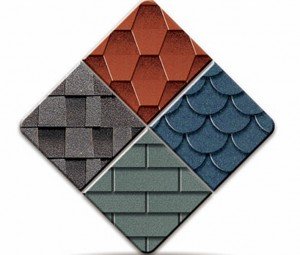 Installing a new roof on your home can be tricky when it comes to deciding among one of several available roof materials. These days we have more choices than ever before, leading us into the tough decision of which material is best for our home. The right choice in roof materials depends on one of several factors.
Installing a new roof on your home can be tricky when it comes to deciding among one of several available roof materials. These days we have more choices than ever before, leading us into the tough decision of which material is best for our home. The right choice in roof materials depends on one of several factors.
Cost
Most homeowners are motivated by cost and tend to gravitate towards choosing the most affordable roof material. Asphalt shingles are among the most cost effective roof materials, as they are the cheapest to install and replace when a roof becomes damaged. However, they are also less durable than other roof materials and could cost more in the long run if repeated roof repairs are required. Metal and clay tile roofs are moderately priced for initial new roof installation, but also tend to last longer than asphalt shingles.
Maintenance
As mentioned, part of what influences the cost of a roof material is how often they require maintenance. Although many simple roof repairs cost very little, the repeated costs of having a roof contractor come out to inspect and repair damage can add up over time. Maintenance isn’t just a direct cost, but also a cost in one’s time and effort. Roof materials that require extensive maintenance can absorb much of a homeowner’s free time and weekend duties. Again, asphalt shingles tend to require a bit more maintenance than other roof materials like metal or tile, as they are easily damaged by wind or debris.
Environmentally Friendly
Not all homeowners are focused on the environment when it comes to choosing the right materials to be used around the house, but green roofs are actually gaining popularity. A truly green roof is environmentally friendly, affordable and less maintenance. A vegetation or grass covered roof can provide durable protection from the elements, as well as cool the home and save on energy consumption. Another alternative is solar roof panels. Although these panels installed on the roof are a bit pricey, but can save thousands in energy bills.
Roofing Company Introduces Smog Eating Tiles

Boral Roofing, an American company, is making a “Smog Eating Tile” they say will reduce air pollution. The concrete tiles are coated with titanium dioxide, a photo-catalyst that can oxidize harmful air pollutants emitted in the burning of fossil fuels.
Titanium dioxide then converts nitrogen oxide pollutants into harmless calcium nitrate when it comes in contact with natural light. John Renowden, Boral Roofing Vice president of technology said “Calcium nitrate… washes off your roof with normal precipitation and is a regular garden fertilizer.”
Renowden also states that the tiles on a 2,000 square foot house over a one year period would be like reducing the pollution equivalent of driving your car 10,000 miles that year. The company says the tile works like a catalytic converter does in your car.
The Technology is Not New
The technology began in Japan and in 2005 the European Commission’s Environmental Technologies Action Plan stated “Tests in urban settings determined that some pollutants, such as nitrogen oxides, which are a major pollutant contained in exhaust gases, could be reduced by 20-70%.”
Boral Roofing has corporate offices in Irvine California; they make clay and concrete roof tiles. You can find where to purchase the BoralPure Smog Eating tiles and installation guides on their website www.boralna.com. Your roofing contractor will be using the same techniques for laying clay or concrete tiles for the smog eating tiles.
Coca Cola Headquarters Gets A Green Roof
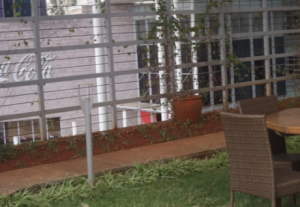 The green roofing industry has captured the attention of many big name corporations in recent years. The Apple headquarters has one of the largest solar roof panel displays in the United States, along with several IKEA buildings. As truly green roofs become more popular around the globe, the East African Coca Cola Company building joins in with a new rooftop garden.
The green roofing industry has captured the attention of many big name corporations in recent years. The Apple headquarters has one of the largest solar roof panel displays in the United States, along with several IKEA buildings. As truly green roofs become more popular around the globe, the East African Coca Cola Company building joins in with a new rooftop garden.
Corporate Green Initiatives
The headquarters of the Coca Cola Company in Nairobi, Kenya is home to one of the largest green roof gardens in the area. The building’s original design plans included an outline for the garden, aiming to lower cooling costs, reduce greenhouse gases and conserve the amount of energy used by the building.Although the building was completed in 2008, the garden has taken a bit longer to complete.
The flat roof designed building now boasts one of the city’s largest rooftop gardens that also includes a recreation are for company employees. Not only is the roof helping to boost local vegetation and product production, it also has helped reduce the amount of water consumption used around the building. Much of the waste water from the building is recycled and distributed to other parts of the building or garden from specialized tanks stored on the building’s roof.
The Coca Cola building roof garden has also inspired other green construction project ideas around the city. Kenya’s government officials are now considering several other green roof projects for other buildings around Nairobi and surrounding areas.
Luxury Condos With Leaky Roofs
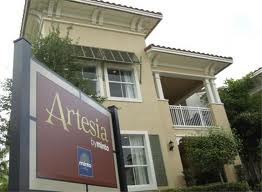
In Sunrise Florida, residents of Mediterranean style luxury condos are complaining of leaking roofs, rotting fascia and cracked walls. The 4 story condo towers at Artesia cost $300,000 to $600,000 and were completed in 2008, the complaints started in 2009.
Patrick Horan purchased 6 condos and is the association president at Artesia; talking about the roof he said “It is deteriorating in front of our eyes because of the way it was installed. The roof is bubbling. It started in 2009 with small pancake bubbles and it has just grown.”
Who Is To Blame?
Minto Communities, the developer puts some of the blame on the condo association for not maintaining the buildings. Steve Svopa, Minto’s vice president said “we want to do the right thing.” He went on to say “Minto and its subcontractors have investigated all of these issues, and have agreed to correct virtually all of the items raised, whether or not they are the fault of the associations’ lack of ongoing maintenance or construction issues.”
Terrance Duffy bought 3 condos and is the secretary and treasurer for one of the condo associations, when talking about Minto he said, “They are blaming the installer and /or the materials supplier for the roof. They have indicated a willingness to continue to patch active leaks as they occur, however this is not acceptable to us. We want a proper roof, properly installed.”
The homeowners have complained twice to officials at Sunrise City Hall only to be told it is a civil matter between them and the developer. The next course of action may be a lawsuit if the roof repair is not completed to the condo homeowners satisfaction.
$24,000 Repair Costs for Texas Civic Center Roof
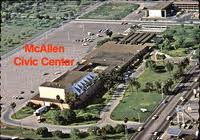
March’s hailstorm damaged the McAllen Texas Civic Center Auditorium’s roof to the tune of $24,000. The commerical roof had an elastomeric acrylic coating that was damaged causing water to pour into the 52 year old theater. The auditorium is located at 1300 S. 10th street in McAllen.
The roof was replaced in 2007 costing the city of McAllen close to $49,000.
The 5-year warranty on the rubber like coating had recently expired leaving the city to cover the cost of repairs. Employees were able to mop up the inch of rain covering the floor, but the wood floor on the stage still buckled due to the moisture. Several events had to be cancelled due the theater flooding.
Theater Open Although Roof Still Leaks
Workers covered the hard wood floor with plastic and ran a humidifier to fix the buckling. Omar Rodriguez, who oversees the auditorium, stated in a letter to customers “As it stands today, we feel confident that we can proceed with your bookings at the auditorium on the original dates contracted.”
Other city buildings were also damaged in the hail storm; it is unknown at this time when the civic center or other roof repairs can be made.
Metal Theft on the Rise for UK Roofs
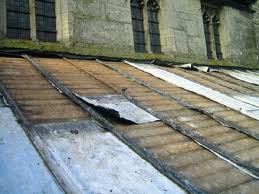
Lead and copper theft has increased in the last couple of years due to a rise in the international commodity prices. Many churches in the UK are taking new measures to protect their churches and metal roofs.
Yorkshire, Cambridgeshire and Suffolk churches are getting alarms for their metal roofs. Insurance carrier Ecclesiastical insures 97% of the Angelican Churches in the UK.
Insurance Claims Skyrocket
In 2011 the insurance company received 2,600 claims for metal theft. Ecclesiastical director of church insurance, John Coates said “It will make churches a harder target for criminals’ intent on stripping the nation’s heritage of roofing lead for their personal gain.”
St. John the Baptist Church in Broadstone was targeted 2 consecutive nights after completing a £100,000 restoration. The thieves stole lead from the roof causing water to leak into the newly refurbished church; they are using tarps to help keep the water out. Members of the congregation are now checking the roof for thieves every 15 minutes when it is dark.
Oxfordshire church roof was sprayed with ‘theft detection liquid’. Using ladders and hydraulic lifts, firefighters sprayed the liquid onto the Wantage Parish Church roof. The liquid has a unique code that can be read under ultraviolet light, allowing police to trace the metal back to a particular building.
Some churches have stopped using lead for their roof since the theft problem is so bad. Using other roofing materials has become an option for some UK churches. a Slough church is using a rubber substitute for their new roof since thieves hit them twice last year.






